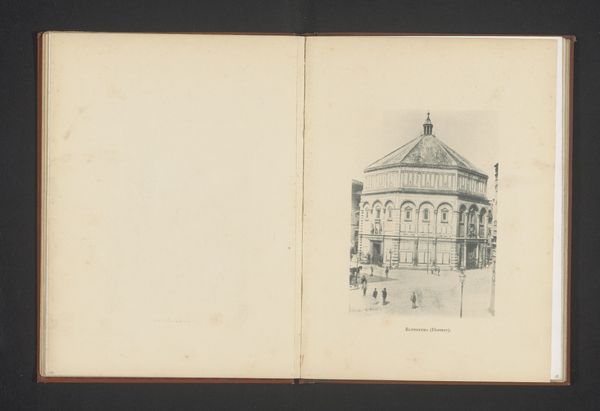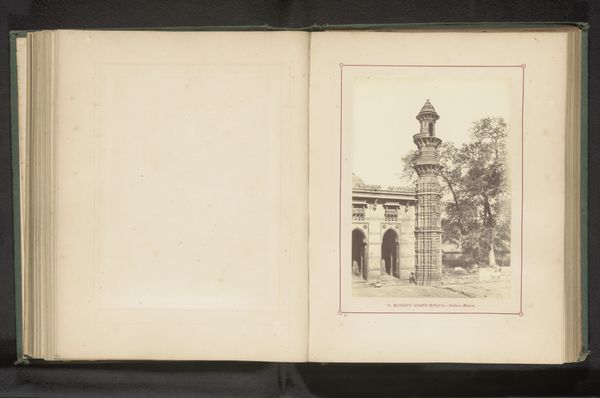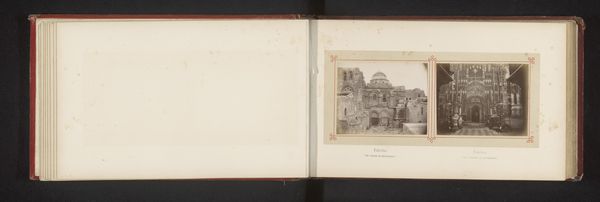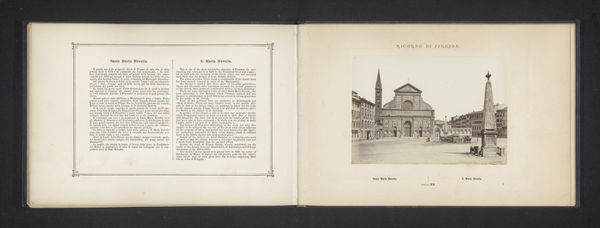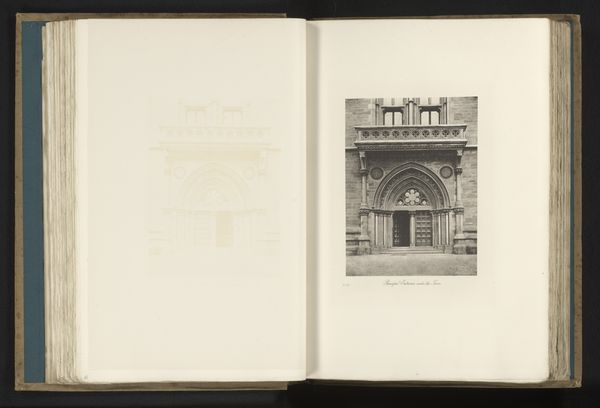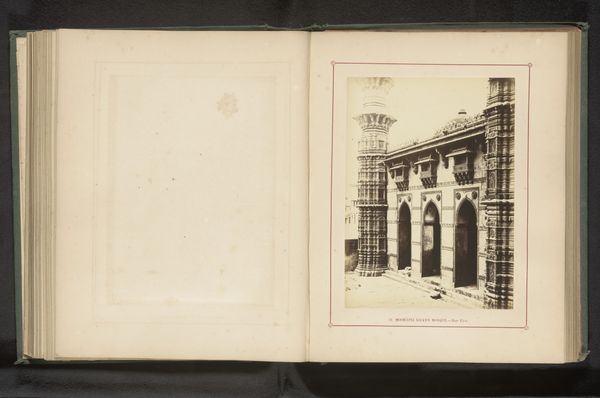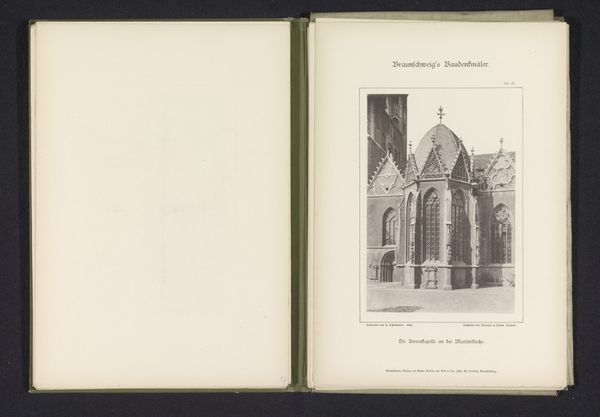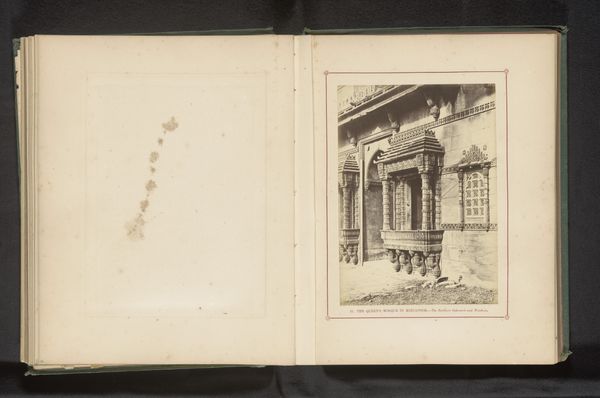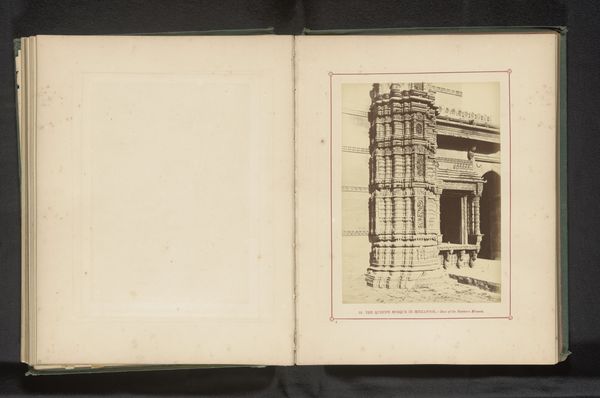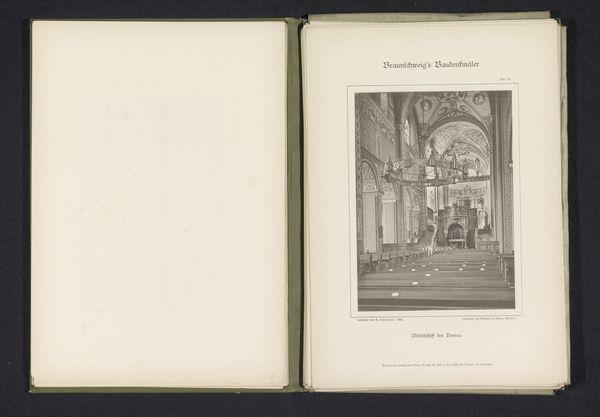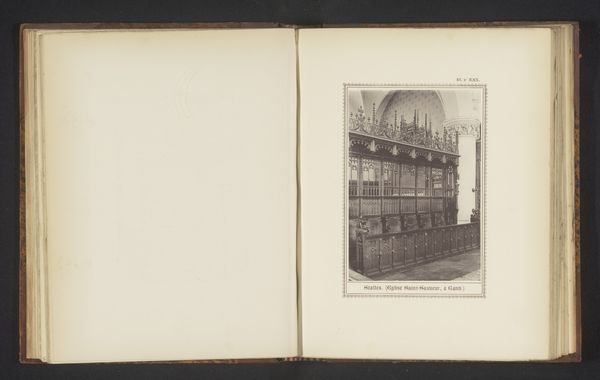
Deel van de gevel van het Musée du Louvre te Parijs, gezien vanaf het Place du Carrousel before 1905
0:00
0:00
photography, albumen-print
#
aged paper
#
homemade paper
#
16_19th-century
#
paperlike
#
hand drawn type
#
landscape
#
paper texture
#
photography
#
folded paper
#
thick font
#
cityscape
#
paper medium
#
design on paper
#
albumen-print
#
historical font
#
building
Dimensions: height 148 mm, width 100 mm
Copyright: Rijks Museum: Open Domain
Here we have William Henry Fox Talbot's image of the Louvre in Paris, part of a book, maybe made using an early photographic process. The tonality is so subtle! It’s not as simple as black and white – it’s more like a symphony of grays, each shade carefully placed. The texture is amazing, almost like a drawing – you can sense the surface of the paper, the way the light catches on it. I keep thinking about how hands were involved in making this, a real person fiddling with chemicals and light. It's interesting how the building appears to dissolve into light towards the top. It's as if the architecture is being slowly erased, or perhaps, revealed, by the very thing that captures it. Thinking about this, I'm reminded of Bernd and Hilla Becher, those German photographers, who methodically documented industrial structures. But where the Bechers are all about crisp objectivity, Talbot is dreamy, a bit out of focus, and totally poetic. It's less about documentation, more about feeling. The world is ambiguous and that's okay.
Comments
No comments
Be the first to comment and join the conversation on the ultimate creative platform.

